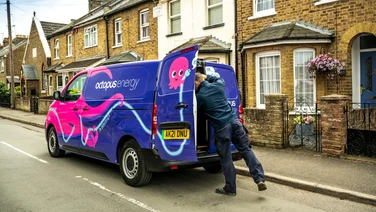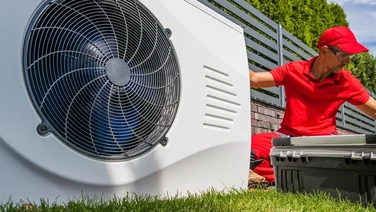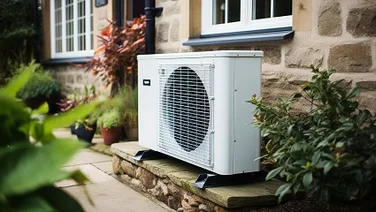- Helen Oy commissions MAN Energy Solutions to build world’s biggest air source heat pump
- Air source heat pump will have a 33 MW capacity, the biggest ever for a domestic heat plant
- It will be operational by 2026 and is a big part of Finland’s net zero plans

Part of the design for the world’s largest air source heat pump – credit MAN Energy SolutionsThe new Patola heating plant complex in Helsinki, Finland, is set to welcome the world’s largest air source heat pump after energy company Helen Oy commissioned MAN Energy Solutions to help the city’s decarbonisation strategy.
The new air source heat pump will have a total capacity of 33 Megawatts (MW), and it will be the biggest ever used for a district heating plant.
The gigantic heat pump will help decarbonize Helsinki’s existing heating power plants, and mean that Finland’s capital city can reduce its CO2 emissions by 26,000 tonnes a year.
If everything goes according to plan, the new heat pump should be operational by 2026 and will form a key part of Finland’s plans for 2030 carbon neutrality ambitions.
“We are very proud to support Helen in achieving climate neutrality in Helsinki,” MAN Energy Solutions CEO Uwe Lauber explained.
“Urban district heating projects that utilize climate-neutral technologies are essential for advancing global efforts to reduce carbon emissions. We are excited to see our heat pump solution play a key role in driving the energy transition forward,” he added.
Like smaller heat pumps, the new plant will generate heat from the air to help reduce the need to burn fossil fuels. It will achieve this by using electrical energy to raise low-temperature thermal energy to a higher, usable level up to around 90°C.

Helen Oy’s plant in Patola, which will soon be home to the world’s largest air source heat pump
Helsinki’s huge eco ambitions
The enormous heat pump will use carbon dioxide in a closed-loop system as a refrigerant rather than typical substances like R-410A or older CFCs. It also incorporates rapid power-balancing from the national grid, which will help balance out demand for more intermittent links in the chain, such as wind and solar.
For this reason, should the refrigerant leak, it will be considerably less toxic to the environment. The plants should be able to supply around 200 gigawatt hours (GWh) of heat to around 30,000 households in Helsinki, reducing CO2 emissions by 26,000 tons.
“Helsinki has set the ambitious goal to become carbon neutral by 2030, and transitioning our heating system is crucial to achieving this,” Juhani Aaltonen, VP of Green Investments at Helen Oy, explained in a press release.
“Once completed, the heat pump plant will significantly reduce the CO2 emissions caused by heating, bringing us closer to our net-zero target. In addition, the new plant is likely to create price stability for customers, as its production is easily adjustable,” he added.
“The heart of Patola’s heat pump system is an oil-free, hermetically-sealed HOFIM® motor-compressor,” MAN Energy Solutions explain. “The compression unit utilises a high-speed motor and active magnetic bearings, enabling it to operate without requiring a dry gas seal system and the complete oil system,” they added.
The Finnish Ministry of Economic Affairs and Employment has subsidized the cost of the new plant, which recognizes the importance of initiatives like it.
Finland embraces heat pumps
Heat pumps have tremendous potential to decarbonise domestic heating, and Finland has embraced the technology.
As of 2023, the country has approximately 24,159 heat pumps per 100,000 people, which makes it one of the most heat pump-friendly countries on Earth, second only to Norway.
This has helped the country cut greenhouse gas (GHG) emissions by approximately two million tonnes.
In addition to the 33 MW heat pump, the Patola heating plant will also habe two MW electric boilers. This pair will enable a stable heat supply in extremely cold weather (up to -20 °C).
Once fully operational, the plant is expected to cut emissions by 56,000 tonnes.







